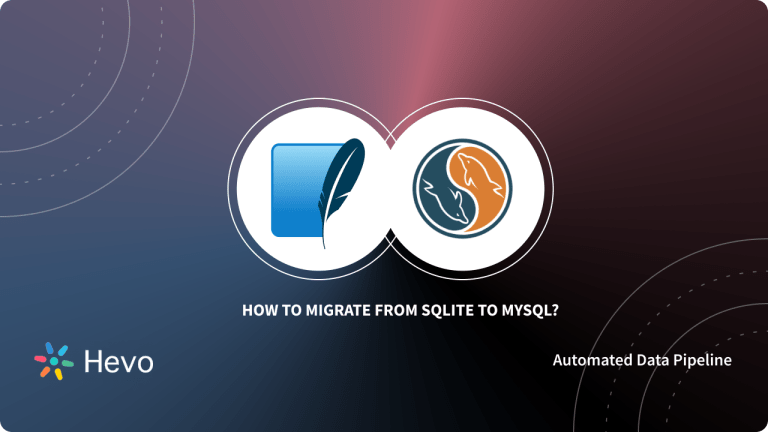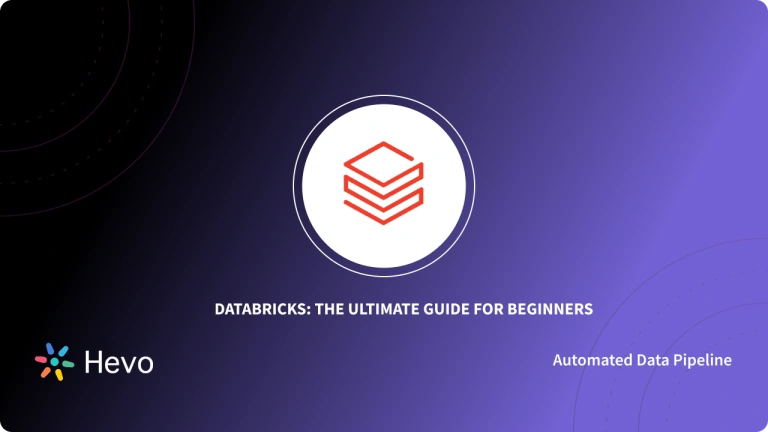Table of Contents
What is SQLite?
SQLite is an open-source Relational Database Management System (RDBMS). Most Relational Databases are based on the Client-Server model, which means that the Database needs a server to run on. SQLite, on the other hand, is a Serverless Relational Database Management System, also known as an Embedded Database. SQLite Database is used to access data from within the software. The Database can be accessed directly without the need for a Host Server intermediary.
SQLite is a file-based, self-contained Database that is known for its portability, low-memory performance, and high reliability. It is easy to set up and is designed to work without a Database Administrator. SQLite data transactions are ACID-compliant (Atomicity, Consistency, Isolation, and Durability). SQLite, being an open-source tool, is available free of cost for all users. However, you can always pay for extra extensions, depending on the use case.
When to Use SQLite?
One of SQLite’s greatest advantages is that it can run on all platforms, including macOS, Windows, Linux, etc. SQLite is an RDBMS contained in a C library, hence, SQLite may be used by applications written in any language as long as they can link to external C libraries. Below are the appropriate uses for SQLite.
- SQLite is useful for creating Embedded Software for digital devices such as Televisions, Phones, Set-Top Boxes, Game Consoles, Cameras, and so on.
- Its flexibility allows you to work on various Databases in the same session, depending on your needs.
- It is used as a Temporary Dataset that allows applications to process data.
- It is a cross-platform DBMS, hence you can access it over all platforms including Windows, macOS, and more.
- It works well as a Database Engine for most websites, as it can manage low to medium-traffic HTTP requests.
- Educational institutions utilize it for learning and training purposes because it is simple to set up and use.
What is Databricks?
Databricks is a popular Cloud-based Data Engineering platform developed by Apache Spark. It deals with large amounts of data and allows you to easily extract insights from it. With the main focus on Big Data and Analytics, it also assists you in the development of AI (Artificial Intelligence) and ML (Machine Learning) solutions. Machine Learning libraries such as Tensorflow, Pytorch, and others can be used for training and developing Machine Learning models.
Databricks is widely used across a wide range of industries, including Healthcare, Media and Entertainment, Finance, Retail, etc., to run large-scale production operations.
Providing a high-quality ETL solution can be a difficult task if you have a large volume of data. Hevo’s automated, No-code platform empowers you with everything you need to have for a smooth data replication experience.
Check out what makes Hevo amazing:
- Fully Managed: Hevo requires no management and maintenance as it is a fully automated platform.
- Data Transformation: Hevo provides a simple interface to perfect, modify, and enrich the data you want to transfer.
- Faster Insight Generation: Hevo offers near real-time data replication so you have access to real-time insight generation and faster decision making.
- Schema Management: Hevo can automatically detect the schema of the incoming data and map it to the destination schema.
- Scalable Infrastructure: Hevo has in-built integrations for 100+ sources (with 40+ free sources) that can help you scale your data infrastructure as required.
- Live Support: Hevo team is available round the clock to extend exceptional support to its customers through chat, email, and support calls.
Key Features of Databricks
Databricks include a variety of features that help users work more efficiently on the Machine Learning Lifecycle. Some of the key features of Databricks include:
- Interactive Notebooks: Databricks’ interactive notebooks provide users with a variety of languages (such as Python, Scala, R, and SQL) and tools for accessing, analyzing, and extracting new insights.
- Integrations: Databricks can be easily integrated with a variety of tools and IDEs (Integrated Development Environment), including PyCharm, IntelliJ, Visual Studio Code, etc., to make Data Pipelining more structured.
- Multiple Data Formats: Users can retrieve data in various formats such as CSV, XML, or JSON by integrating Databricks with other Cloud data storage platforms like Google BigQuery Cloud Storage, Snowflake, and others.
- Optimized Spark Engine: Databricks allows you to avail the most recent versions of Apache Spark. Equipped with the availability and scalability of multiple Cloud service providers, it is very easy to set up clusters and build a fully managed Apache Spark environment.
- Machine Learning features: Databricks offers pre-configured Machine Learning libraries based on popular frameworks such as TensorFlow, PyTorch, and Scikit-learn.
- Delta Lake: Databricks houses an open-source Transactional Storage layer that can be used for the whole data lifecycle. This layer brings data scalability and reliability to your existing Data Lake.
Why is SQLite Databricks Integration Important?
- Efficient Data Management: SQLite-Databricks integration allows seamless management of small to medium datasets, combining SQLite’s lightweight database with Databricks’ powerful big data analytics platform.
- Data Transfer & Transformation: Simplifies data migration from SQLite to Databricks for large-scale processing, allowing users to leverage Spark’s parallel processing for faster transformations.
- Unified Analytics: Enables users to analyze SQLite data alongside large datasets within Databricks, creating a single platform for querying, visualizing, and analyzing data.
- Scalability: Supports SQLite users by providing scalable computing resources in Databricks, making it easier to handle growing data needs and more complex queries.
Establishing SQLite Databricks Integration via CSV Files
Depending on the requirements, one might want to leverage SQLite Datbricks integration for their business. When integrated with SQLite, data can be moved from SQLite to Databricks to perform almost real-time analysis to solve some of the biggest data problems for businesses. This article will help you to manually establish an SQLite Databricks integration.
While setting up the SQLite Databricks connection manually, you need to convert your SQLite data into CSV and then transfer it to a Databricks Table. To achieve this SQLite Databricks integration, follow the easy steps given below.
Step 1: Convert SQLite Data to CSV Files
The command-line utility sqlite3 or sqlite3.exe can be used to convert SQLite data to CSV files. Follow the easy steps below to get started.
- Use the
.headercommand to enable the result set’s heading when converting SQLite data to CSV files. - Now, you can change the sqlite3 tool’s output mode to CSV to get the result in CSV format.
- Save the result as a CSV file. Select the data table from which you want to retrieve the information and run the sample query as shown below.
>sqlite3 c:/sqlite/chinook.db
sqlite> .headers on
sqlite> .mode csv
sqlite> .output data.csv
sqlite> SELECT customerid,
...> firstname,
...> lastname,
...> company
...> FROM customers;
sqlite> .quit- Upon this, a data.csv will be created.
- Alternatively, you can also use the sqlite3 tool’s options to convert SQLite data into CSV Format.
>sqlite3 -header -csv c:/sqlite/chinook.db "select * from tracks;" > tracks.csv- You can also execute your statements in query.sql and send data to a CSV file if you have a file named query.sql containing the script to query data.
>sqlite3 -header -csv c:/sqlite/chinook.db < query.sql > data.csvStep 2: Loading CSV Data into a Databricks Table
The next step of the SQLite Databricks connection requires you to load the exported SQLite CSV data into a Databricks Table. Follow the below-mentioned steps to easily import CSV files to Databricks.
- Launch Databricks and navigate to the sidebar menu. Click on the “Data” option.
- Now, click on the “Create Table” button.
- Click on the dropdown and browse the CSV file that you want to upload. Alternatively, you can also drag the required CSV file to the Files Dropzone.
- After uploading the file, the path would look something like this:
/FileStore/tables/<filename>-<integer>.<file-type>.
- Now, click on the “Create Table with UI” button.
- The data you added to a table with the Create Table UI is also accessible via the landing page’s Import & Explore Data section.
Now that you have successfully uploaded data to the table, you can follow the steps given below to modify and read the data in order to perform Databricks Read CSV:
- Now, to read the uploaded data, select a Cluster to preview the table and click on the “Preview Table” button.
- The table attributes are of type “String” by default. You can select the appropriate data type for the attributes from the drop-down menu. The left bar consists of various options to update the data in the table.
- Once you have updated the data and the configurations, click on the “Create Table” button.
- Now, navigate to the “Data” section and choose the Cluster where you have uploaded the file to read data.
You’ve now successfully established the SQLite Databricks integrations. You’re now all set to deep dive into your business data and perform insightful analysis using Databricks.
However, going ahead with this method, you will be stuck with data inconsistencies and errors as Data Transformation is a tedious task in this case. You can opt for a third-party solution if you don’t want to spend a lot of time resolving data issues.
Limitations of Creating SQLite Databricks Connection Using CSV Files
- Lack of Advanced Features: Manual methods don’t support advanced integration features like real-time data streaming or change data capture, limiting the ability to use Databricks for real-time analytics on SQLite data.
- Scalability Issues: SQLite is not designed for handling large datasets or concurrent write operations, which can limit performance when integrating with a large-scale platform like Databricks.
- Manual Data Transfer: Transferring data between SQLite and Databricks manually (e.g., using CSVs or other file formats) can be time-consuming and prone to errors, especially when handling large datasets or frequent updates.
- Data Consistency: Without automated syncing, ensuring data consistency and integrity between SQLite and Databricks can become difficult, especially when dealing with real-time or frequently updated data.
Conclusion
Integrating SQLite with Databricks is a fantastic option if you have large volumes of data on SQLite waiting to break out of silos and provide valuable insights. SQLite Databricks integration allows companies to simplify and streamline their storage of data in modern Data Warehouses. This also allows organizations to explore their business data with the help of self-service analytical tools and Machine Learning options.
This article provides you with a step-by-step guide on how to establish an SQLite Databricks integration. Replicating the SQLite data into Databricks via CSV files is a tedious process and will create a slug of errors and data consistency issues. However, connecting to Databricks using a Data Integration tool like Hevo can perform this process with no effort and no time.
Hevo Data with its strong integration with 150+ Sources allows you to not only export data from multiple sources & load data to the destinations like Databricks, but also transform & enrich your data, & make it analysis-ready so that you can focus only on your key business needs and perform insightful analysis using BI tools.
Sign up for Hevo’s 14-day free trial and experience seamless data migration.
Frequently Asked Questions
1. What is SQLite used for?
SQLite is a lightweight, self-contained, and serverless SQL database engine. It is widely used for various applications due to its simplicity, portability, and ease of integration.
2. Can I write SQL in Databricks?
Yes, you can write SQL in Databricks.
3. Which database is used in Databricks?
Databricks primarily leverages Apache Spark for its data processing engine, and it is designed to integrate with a variety of databases and storage solutions.









